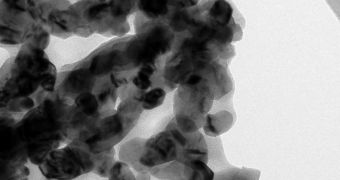A group of investigators from the State University of New York (SUNY) announce the development of an innovative metallic grid that can be used to clean up oil spill. The tool works by breaking down oils and other chemicals into biodegradable substances that are easier to remove.
The study team was led by Pelagia-Irene Gouma, who is a professor in the Department of Materials Science and Engineering at the university. She explains that the new nanogrid is basically a large net consisting of metal grids, which can be activated by sunlight.
When this occurs, the copper tungsten oxide making up the grids triggers a series of chemical reactions that break down floating oil into a series of biodegradable compounds. The hydrocarbons destroyed in this manner can no longer contaminate the water.
“It utilizes the whole solar spectrum and can work in water for a long time, which no existing photocatalyst can do now. Ours is a unique technology. When you shine light on these grids, they begin to work and can be used over and over again,” Gouma says.
The new study was supported by the US National Science Foundation. The resulting photocatalytic nanogrids are now the basis on which the team wants to create a new spinoff company. Two patents for the technology are already pending, the lead researcher adds.
When this tool enters mainstream use, the impact of ecological disasters such as the 2010 Deepwater Horizon spill, which damaged the Gulf of Mexico extensively, may be averted altogether.
“Something like this would work fine for any oil spill. Any ship can carry them, so if they have even a small amount of spill, they can take care of it,” says Gouma, who is the director of the Center for Nanomaterials and Sensor Development at SUNY.
In addition to cleaning up oil spills, the nanogrids could potentially be employed to treat water that has been contaminated by hydraulic fracturing. This process is used to extract gas and oil from unconventional deposits deep within Earth's crust.
Hydraulic fracturing “is a reality. It is happening. If the science and engineering we produce in the lab can help alleviate environmental problems, we will be happy about that,” Guoma concludes.

 14 DAY TRIAL //
14 DAY TRIAL //